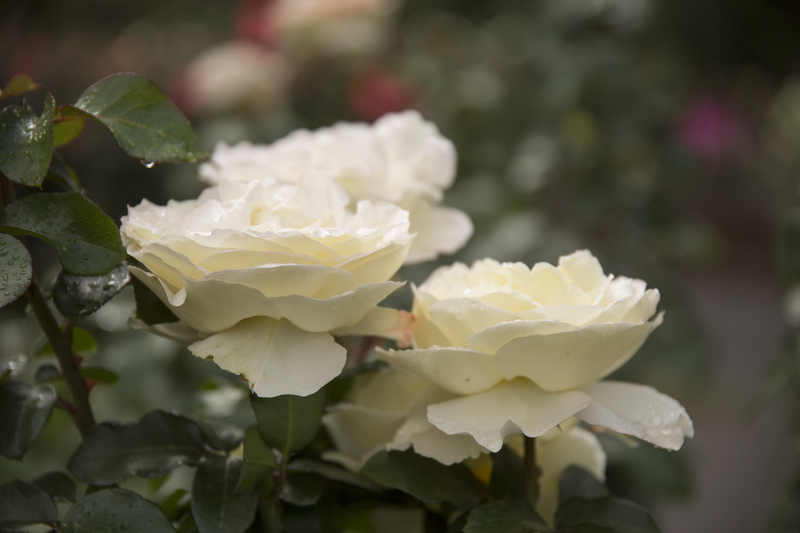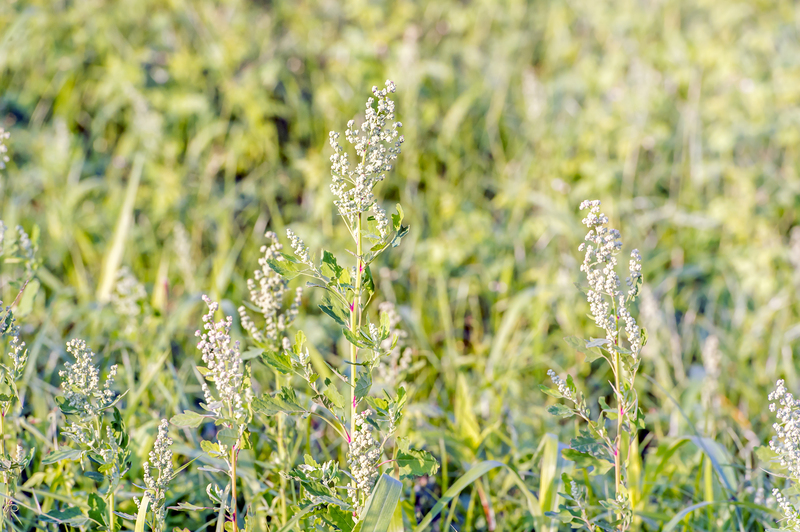Nurturing Gardens and Dogs Alike
Posted on 26/06/2025
Nurturing Gardens and Dogs Alike: A Comprehensive Guide
For pet lovers who cherish both vibrant gardens and loyal dogs, integrating the two harmoniously is more than a pleasure—it’s a fulfilling lifestyle. But nurturing gardens and dogs alike requires a delicate balance. Whether you are a green thumb or a dedicated dog parent, this guide unveils how to cultivate flourishing landscapes while raising happy, healthy pets.

Why Combine Gardening with Dog Ownership?
The joy of tending a garden while your furry companion frolics nearby is unmatched. However, for many, the challenge lies in managing both spaces so that dogs thrive alongside blossoming flowerbeds and lush vegetable patches. Integrating these two passions comes with benefits, including holistic well-being for pets and humans, environmental enhancement, and a dynamic living space.
Key Reasons to Nurture Gardens and Dogs Together
- Physical and Mental Health – Both gardening and dog ownership have been scientifically linked to reduced stress, improved mood, and increased physical activity.
- Natural Enrichment – Dogs love exploring scents and textures, and a thoughtfully planned garden offers endless opportunities for enrichment.
- Environmental Stewardship – Creating eco-friendly spaces that support both canine and plant life fosters biodiversity and sustainability.
Designing a Dog-Friendly Garden
As you embark on nurturing your garden and dog simultaneously, begin with intelligent design. A pet-friendly landscape considers your dog’s instincts and safety without sacrificing visual beauty or horticultural diversity.
Strategic Layout and Pathways
- **Dog Paths**: Carve out gentle pathways through turf or mulch. These designated trails can reduce random trampling and allow dogs to patrol their territory.
- Safe Zones: Allocate specific areas where your pet can dig or play freely. Fill these zones with sand or loose soil for easy maintenance.
- Barriers and Borders: Use raised beds, natural fences, or decorative edging to protect delicate blooms from canine curiosity.
Choosing Pet-Safe Plants
One of the most critical aspects of nurturing gardens and dogs alike is plant selection. While beauty matters, safety is paramount. Opt for non-toxic varieties and avoid species harmful to pets, such as lilies, foxgloves, or oleander.
- Dog-Friendly Favorites: Sunflowers, snapdragons, camellias, marigolds, and thyme are generally safe and add vibrant color.
- Avoid: Azaleas, sago palms, daffodils, and hydrangeas are hazardous if ingested by dogs.
- Consider Ornamental Grasses: Soft varieties create texture and are resilient to canine feet and playful antics.
Mulching and Ground Cover
- Pet-Safe Mulches: Use cedar or pine bark mulch; avoid cocoa mulch which contains theobromine, toxic to dogs.
- Hardwearing Lawns: Choose perennial rye or Kentucky bluegrass, both of which withstand wear and tear from dog play.
- Low-Growing Groundcovers: Clover or creeping thyme tolerate light traffic and suppress weeds naturally.
Training Dogs for Garden Etiquette
Even the most well-planned garden can suffer under an untrained pup. Nurturing gardens and dogs together means teaching your pet the ground rules early and often.
Positive Reinforcement Techniques
- Boundaries: Use cues and positive reward systems to teach dogs which areas are off-limits.
- Digging Alternatives: Encourage your dog to dig in designated spots by burying toys or treats, reinforcing permitted behavior.
- Patience Training: Practicing ‘leave it’ and ‘stay’ around vulnerable plants helps your dog learn impulse control.
Exercise and Enrichment
- Sensory Experiences: Allow dogs to sniff aromatic herbs or roll in dog-friendly grass for mental stimulation.
- Obstacle Courses: Install agility equipment or tunnels at garden margins; this keeps dogs entertained and focused away from flowerbeds.
- Supervised Exploration: Especially with puppies or new rescues, surveillance helps prevent accidents and reinforces good habits.
Protecting Both Plants and Pets
Shared environments mean shared risks. To nurture gardens and dogs together successfully, minimize chemical exposure, choose safe gardening methods, and provide canine comfort.
Organic and Pet-Safe Garden Care
- Fertilizer Caution: Many fertilizers contain compounds dangerous to pets. Opt for compost or animal-safe formulas. Always store chemicals securely.
- Pesticide Alternatives: Use organic pest control like neem oil or insecticidal soap. Companion planting, such as marigolds with vegetables, can repel unwanted insects naturally.
- Mulch and Stone Selection: Ensure all hardscaping materials are chew-proof and non-toxic.
Providing Shade and Water
- Shade Structures: Trees, pergolas, or dog houses offer essential cool retreats during hot days.
- Fresh Water: A dedicated, clean water bowl—or even a small dog-friendly fountain—prevents pets from drinking from potentially unsafe garden ponds.
Fencing and Security
- Invisible Barriers: Low fences, trellises, or living hedges can gently deter dogs from restricted areas without disrupting the landscape.
- Security Checks: Regularly inspect fences and gates to prevent escapes and unwanted wildlife intrusion.
Sustainable Practices for Pet and Plant Well-being
Eco-friendly approaches benefit both dogs and gardens. Sustainable gardening aids overall health and fosters harmony between flora and fauna.
Composting with Care
- Compost Bins: Secure compost to prevent pet access. Certain food scraps and decomposing materials can be toxic if ingested by curious dogs.
- Enriching Soil: Well-composted organic matter boosts plant health, reducing reliance on store-bought fertilizers.
Encouraging Natural Pest Control
- Beneficial Insects: Ladybugs, bees, and predatory beetles help keep pests in check and support pollination, essential for robust gardens.
- Wildlife-Friendly Spaces: Bird feeders or insect hotels promote biodiversity, supporting the ecosystem your dog explores.
Favorite Activities: Enjoying Your Garden with Your Dog
Nurturing gardens and dogs isn’t just work—it’s a source of shared happiness. Explore ways to make your outdoor space a place of connection.
Joint Activities for Dogs and Gardeners
- Fetch and Play: Use open lawns for games of fetch, keeping precious plant beds protected by strategic borders.
- Dog Gardening Companions: Engage your dog by letting them “help”—such as handing you small tools or sitting nearby as you weed.
- Nature Walks: Create a looping path or sensory walk lined with non-toxic plants for joint explorations.
- Relaxation Zones: Place a bench or hammock in a cool spot so you both can unwind after garden chores.
Photograph and Document
- Memory Making: Capture photos of blooms and your dog’s antics. Document growth and changes in a garden journal for years to come.

Common Challenges and Solutions
Every garden-loving dog owner faces occasional setbacks. Here’s how to overcome some typical problems when nurturing your garden and your dog together:
Digging Damage
- Solution: Provide a designated digging pit, reinforce garden borders with stones or logs, and train desired behaviors.
Urine Spots on Lawns
- Solution: Water the area immediately after your dog urinates, seed with resilient grasses, or train your dog to use a specific area for elimination.
Path Trampling
- Solution: Guide your dog onto designated paths, use robust ground covering plants, and erect subtle barriers where necessary.
Pest and Parasite Concerns
- Solution: Keep lawns trimmed, check your dog for ticks after outdoor play, and use nontoxic repellents in the yard.
Conclusion: Growing Together
Nurturing gardens and dogs alike is a rewarding endeavor that yields countless benefits—lush greenery, canine enrichment, and joyful companionship. By balancing the needs of your plants and pets, you can have a thriving backyard paradise that welcomes both paws and petals.
With mindfulness and planning, gardening with dogs transforms your outdoor space into a sanctuary where all living things can flourish. Start today, and watch your dog and your garden both grow stronger, happier, and more beautiful—together.
Further Reading (FAQs)
- What plants are unsafe for dogs? Refer to ASPCA’s list for a comprehensive guide and always cross-check species before planting.
- Can you garden organically with dogs? Absolutely—organic methods are safer for both pets and the environment.
- How do you repair pet-damaged lawns? Overseed bald patches with robust grass varieties, and consider pet-specific lawn repair products.
Embrace the journey of nurturing gardens and dogs together, and experience the joy of a household in harmony with nature and your furry best friend!

